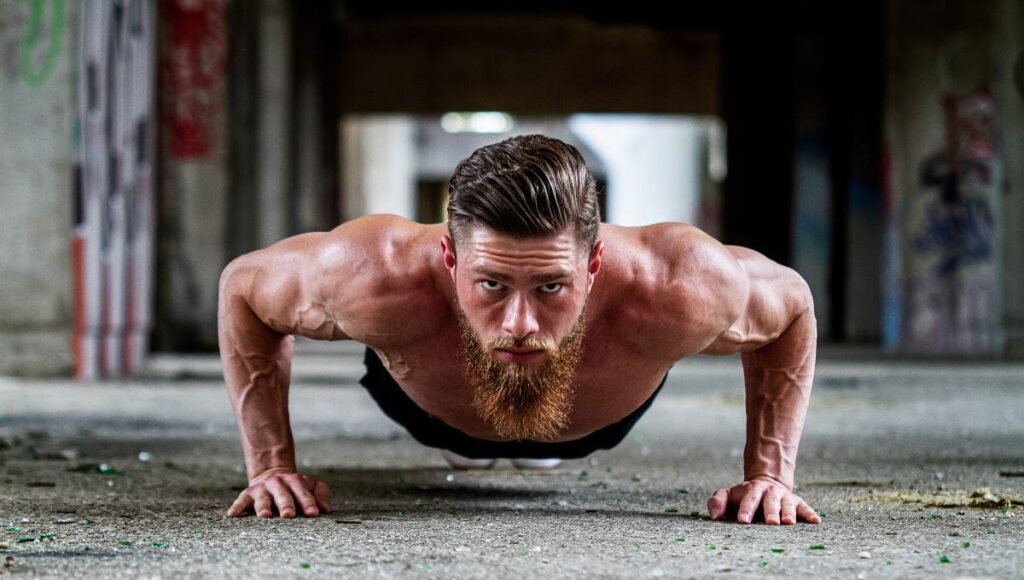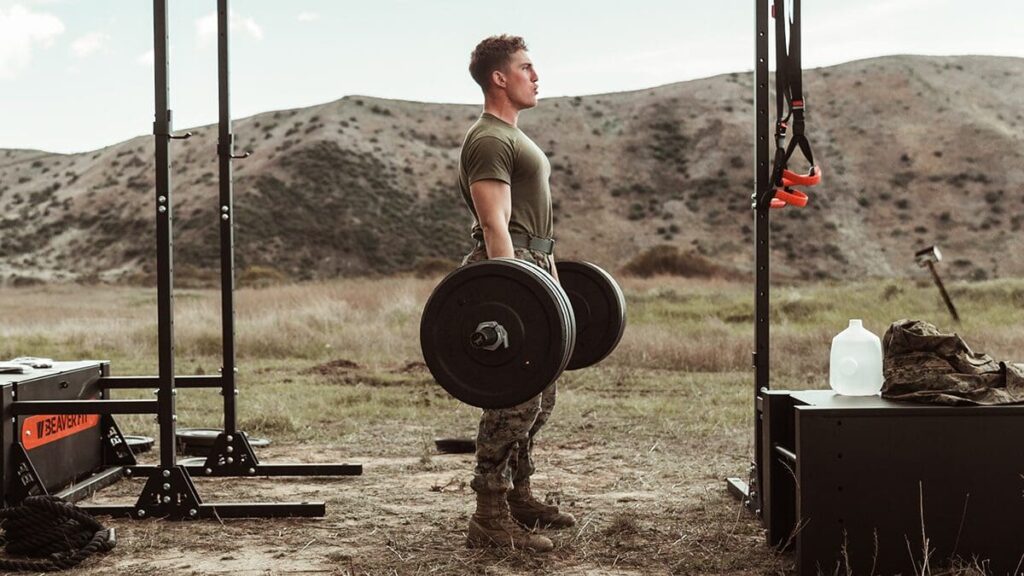The shoulders are a crucial muscle group for a balanced, powerful physique. Building strong and well-defined deltoids not only enhances your appearance but also improves your overall athletic performance. In this article, we will explore three scientifically-backed training secrets that can help you maximise shoulder muscle growth. Each technique is based on solid research, ensuring you achieve the best results from your workouts.

The Anatomy of the Shoulder Muscles
Understanding the anatomy of the shoulder is essential to target the muscles effectively. The shoulder is composed of three main muscle heads: the anterior deltoid (front), the lateral deltoid (side), and the posterior deltoid (rear). Each of these heads plays a different role in shoulder movement and stability.
Anterior Deltoid
The anterior deltoid is responsible for shoulder flexion and internal rotation. It is heavily involved in pushing movements, such as the bench press and shoulder press.
Lateral Deltoid
The lateral deltoid primarily facilitates shoulder abduction, which is the movement of lifting your arm to the side. This muscle head is crucial for creating width in the shoulders.
Posterior Deltoid
The posterior deltoid is involved in shoulder extension and external rotation. It is activated during pulling movements, such as rows and reverse flyes.
Secret 1: Prioritise Compound Movements
Compound movements are exercises that engage multiple muscle groups and joints simultaneously. They are highly effective for stimulating muscle growth due to the increased load and the engagement of stabilising muscles.

The Science Behind Compound Movements
Research indicates that compound movements can lead to greater muscle hypertrophy compared to isolation exercises. A study by Schoenfeld (2010) found that multi-joint exercises elicited a more significant anabolic response, promoting greater muscle protein synthesis.
Effective Compound Exercises for Shoulder Growth
- Overhead Press: This exercise targets all three heads of the deltoid while also engaging the triceps and upper chest. Variations such as the barbell, dumbbell, and Arnold press can be used to keep the muscles guessing.
- Push Press: Incorporating a slight leg drive, the push press allows you to lift heavier weights, further stimulating shoulder muscle growth. This movement also recruits the lower body, providing a full-body workout.
- Clean and Press: This Olympic lift combines a clean (lifting the barbell to shoulder height) with an overhead press. It is excellent for overall shoulder development and explosive power.
Secret 2: Implement Progressive Overload
Progressive overload is the gradual increase of stress placed on the muscles during training. It is a fundamental principle for muscle growth, ensuring continuous adaptation and strength gains.
The Science Behind Progressive Overload
A study by Peterson et al. (2004) demonstrated that progressive overload is critical for increasing muscle size and strength. The researchers found that systematically increasing the weight, reps, or sets over time led to significant improvements in muscle hypertrophy.

Strategies for Progressive Overload
- Increase the Weight: Gradually increase the weight you lift to challenge your muscles. Aim for a 2-5% increase every 2-4 weeks.
- Increase the Repetitions: Adding more reps to your sets can also enhance muscle growth. For example, if you usually perform 8 reps, aim for 10-12 reps with the same weight before increasing the load.
- Increase the Sets: Adding more sets to your workout can further stimulate muscle growth. If you typically do 3 sets of an exercise, try adding an additional set once you can complete your current sets with ease.
- Change the Tempo: Slowing down the eccentric (lowering) phase of a lift can increase time under tension, promoting greater muscle damage and growth.
Secret 3: Focus on Muscle Activation and Mind-Muscle Connection
Maximising muscle activation and establishing a strong mind-muscle connection can significantly enhance shoulder growth. This involves concentrating on the targeted muscle during each exercise to ensure it is fully engaged.
The Science Behind Muscle Activation
A study by Calatayud et al. (2015) highlighted the importance of muscle activation for hypertrophy. The researchers found that exercises with higher electromyographic (EMG) activity levels led to greater muscle growth due to increased motor unit recruitment.
Techniques to Enhance Muscle Activation
- Pre-Exhaustion: Start your workout with an isolation exercise to fatigue the target muscle before moving on to compound movements. For example, perform lateral raises before shoulder presses to pre-exhaust the lateral deltoids.
- Slow and Controlled Movements: Focus on a slow and controlled lifting and lowering phase to maximise muscle tension. This approach can lead to increased muscle activation and hypertrophy.
- Partial Reps and Holds: Incorporate partial reps and isometric holds at the end of a set to fully fatigue the muscle. This technique can increase time under tension and stimulate additional muscle fibres.
- Mind-Muscle Connection: Actively think about the muscle you are working on during each rep. Visualising the muscle contracting can enhance motor unit recruitment and muscle activation.
Optimising Your Shoulder Training Routine
To incorporate these training secrets effectively, it is essential to design a well-rounded shoulder training routine. Below is a sample workout plan that integrates compound movements, progressive overload, and muscle activation techniques.
Sample Shoulder Workout Plan
Warm-Up: 10 minutes of light cardio and dynamic stretches
Compound Movement Focus
- Barbell Overhead Press: 4 sets of 6-8 reps
- Focus on progressive overload by increasing the weight gradually.
- Push Press: 3 sets of 8-10 reps
- Incorporate explosive movements to engage multiple muscle groups.
Isolation and Activation Focus
- Lateral Raises: 4 sets of 12-15 reps
- Use a slow and controlled tempo to maximise muscle activation.
- Face Pulls: 3 sets of 15 reps
- Target the posterior deltoids and improve shoulder stability.
- Rear Delt Flyes: 4 sets of 12-15 reps
- Focus on the mind-muscle connection and ensure full contraction of the rear deltoids.
Finisher
- Arnold Press: 3 sets of 10-12 reps
- Combine anterior and lateral deltoid activation with a twist.
Rest and Recovery
Muscle growth occurs during rest, not during the workout. Ensure you get adequate rest and recovery between shoulder workouts. Aim for at least 48 hours of recovery time before targeting the shoulders again.
Nutrition and Supplementation
Proper nutrition is essential for muscle growth. Ensure you consume a diet rich in protein, healthy fats, and complex carbohydrates. Supplements such as whey protein, creatine, and branched-chain amino acids (BCAAs) can also support muscle growth and recovery.
Conclusion
Building impressive shoulder muscles requires a strategic approach. By prioritising compound movements, implementing progressive overload, and focusing on muscle activation, you can maximise your shoulder growth. Remember, consistency and patience are key. Follow these scientifically-backed training secrets, and you’ll be on your way to achieving well-developed, powerful shoulders.
Key Takeaways
| Training Secret | Key Points |
|---|---|
| Prioritise Compound Movements | Engage multiple muscle groups and joints to stimulate greater muscle hypertrophy. |
| Implement Progressive Overload | Gradually increase the weight, reps, or sets to ensure continuous muscle growth and adaptation. |
| Focus on Muscle Activation | Enhance muscle activation and mind-muscle connection to maximise hypertrophy. |
Bibliography
- Schoenfeld, B.J., 2010. The mechanisms of muscle hypertrophy and their application to resistance training. Journal of Strength and Conditioning Research, 24(10), pp.2857-2872.
- Peterson, M.D., Rhea, M.R. and Alvar, B.A., 2004. Applications of the dose-response for muscular strength development: a review of meta-analytic efficacy and reliability for designing training prescription. Journal of Strength and Conditioning Research, 18(2), pp.377-382.
- Calatayud, J., Borreani, S., Colado, J.C., Martin, F., Tella, V., Moya, M. and Andersen, L.L., 2015. Bench press and push-up at comparable levels of muscle activity results in similar strength gains. Journal of Strength and Conditioning Research, 29(1), pp.246-253.
How often should I train my shoulders for optimal growth?
For optimal shoulder growth, it’s generally recommended to train your shoulders 1-2 times per week. Ensure you have at least 48 hours of rest between shoulder workouts to allow for adequate recovery and muscle growth.
Can I train my shoulders with other muscle groups?
Yes, you can train your shoulders with other muscle groups. A common approach is to pair shoulder training with chest or back workouts. For example, you can do a u0022pushu0022 day that includes chest and shoulders, or a u0022pullu0022 day with back and rear deltoids.
What should I do if I experience shoulder pain during workouts?
If you experience shoulder pain during workouts, it’s crucial to stop the exercise immediately and assess the situation. Pain could indicate an injury or improper form. Consult a healthcare professional or a physiotherapist to diagnose the issue. Additionally, ensure you warm up properly and use correct form to prevent injuries.
How important is diet in shoulder muscle growth?
Diet plays a crucial role in muscle growth, including the shoulders. Ensure you consume a diet rich in protein to support muscle repair and growth, along with healthy fats and complex carbohydrates for energy. Staying hydrated and getting essential vitamins and minerals also support overall muscle health.
Can I build shoulder muscles without weights?
Yes, you can build shoulder muscles without weights by using bodyweight exercises and resistance bands. Exercises such as push-ups, pike push-ups, and resistance band shoulder presses can effectively target the shoulder muscles.
How long will it take to see results in shoulder muscle growth?
The time it takes to see results in shoulder muscle growth varies based on factors such as your training intensity, frequency, diet, and genetics. Typically, with consistent training and proper nutrition, you can start seeing noticeable improvements within 8-12 weeks.
Are isolation exercises necessary for shoulder growth?
While compound movements are highly effective for shoulder growth, isolation exercises can help target specific muscle heads and improve overall muscle development. Incorporating both compound and isolation exercises into your routine can lead to balanced and well-defined shoulders.
How important is proper form during shoulder exercises?
Proper form is crucial during shoulder exercises to prevent injuries and maximise muscle activation. Poor form can lead to muscle imbalances and increase the risk of shoulder impingements or rotator cuff injuries. Always prioritise technique over lifting heavier weights.






